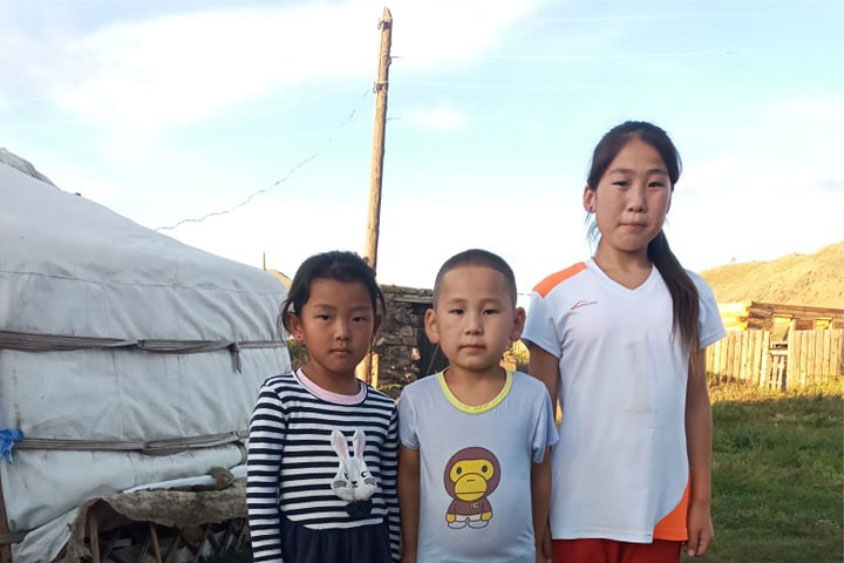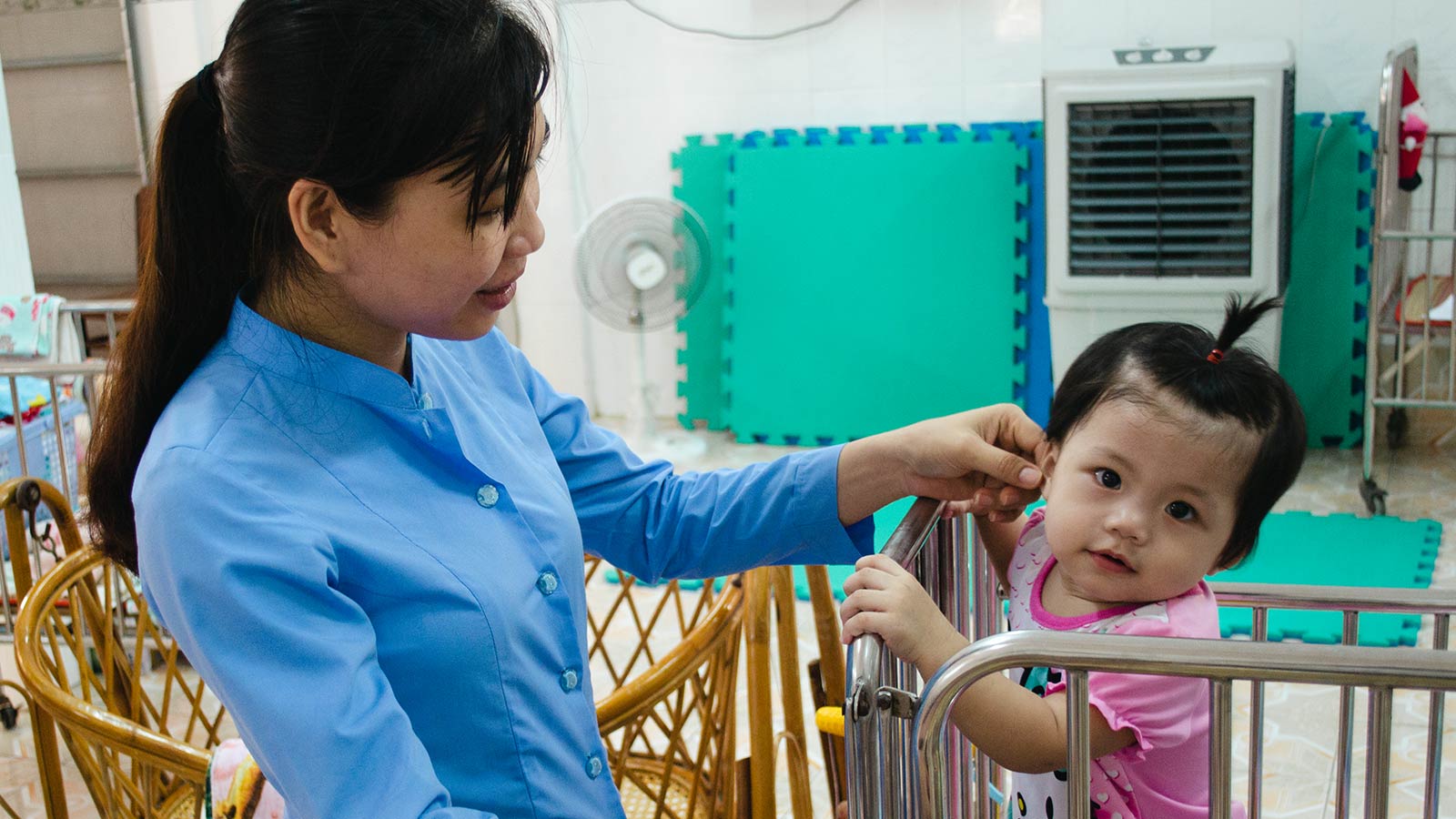With a required stay of 10-12 weeks, South Africa has one of the longest travel requirements of any international adoption program. Below, South Africa Adoption Director Angie Wharfield and Adoption Case Manager Amanda Colonia share some of the benefits to a long stay in country.
In one of the earliest Holt photos, you can see Harry Holt followed by a row of caregivers as they step off a plane — each holding a baby in their arms, destined for their eagerly awaiting adoptive parents. In the early days of international adoption, families did not typically travel to their children’s birth country as part of the adoption process. Instead, an escort — often a social worker or staff member — would make the long journey overseas to unite a child with their family.
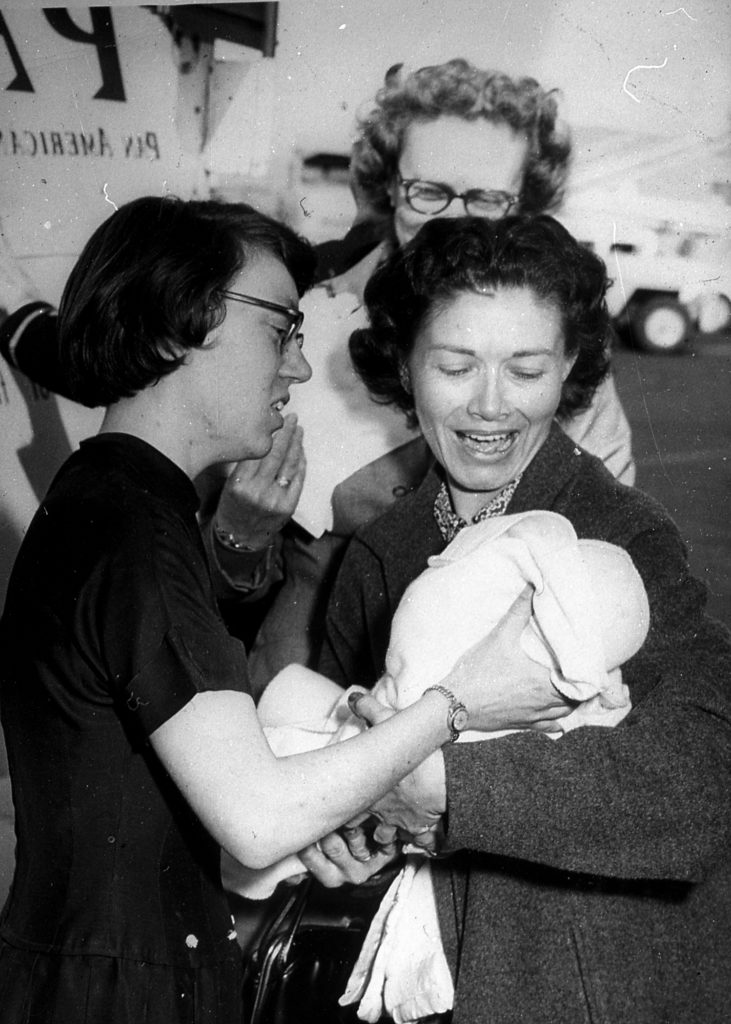
Today, the process is quite different — with most countries requiring that families travel as part of the international adoption process. The time families spend in country varies, with some requiring a longer or shorter stay. But as most adoptive families will attest, the opportunity to see and experience your child’s birth culture and country — and to experience the culture with your child — is hugely beneficial for both of you. The longer you stay, the more immersive your experience will be — helping you understand the nuances of your child’s culture, and also giving you a greater understanding of the culture shock that your child is about to go through.
Amanda Colonia, adoption case manager for South Africa, explains this culture shock as a kind of discomfort. “For a short amount of time,” she says, “families get the opportunity to be in an uncomfortable situation where they’re feeling probably similar feelings that their child will experience when they’re brought to the U.S.”
With a required stay of 10-12 weeks, South Africa has one of the longest travel requirements of any international adoption program. For many families, this requirement has led them to explore other country programs with a shorter required stay in country. But the South Africa program may be a great fit for those with greater flexibility — often two-parent families in which one is a stay-at-home parent, though intrepid single parents should not be discouraged.
Below, South Africa Adoption Director Angie Wharfield and Adoption Case Manager Amanda Colonia share some of the benefits to a long stay in country — highlighting why families may want to consider (or look again at) adopting from South Africa. For families already in the process of adopting from South Africa, these insights may also provide some encouragement and inspiration as you prepare for your long stay abroad.
A Longer Stay Helps Ease Your Child’s Transition
One reason that countries now require families to travel as part of the adoption process is due to greater insight into how the transition affects children. “When we do child-centered transitions, it’s important to do those transitions in familiar settings for the child,” Angie explains. In the more than 65 years that international adoption has been in practice, social workers have learned quite a bit about how to make the process easier on children — and one key way is to give a child the chance to get to know their new adoptive parents in an environment that is safe and familiar to them.
While a shorter stay in country certainly still allows for a child-centered transition, families adopting from South Africa have the advantage of a more gradual transition period with their child.
“[After the legal process is complete], the family has another two months-plus of being in their child’s environment where things are familiar,” Angie says. “Food, language, smells, sights are all familiar while introducing the adoptive family to the child. It really gives a good gradual transition for the child and the family.”
In a shorter transition period, families may take custody within a couple of days of meeting their child. But given a longer time in country, families can draw that process out — and even extend it further if the child is not ready to physically join their family full time yet.
“A child could be introduced to the family in their environment — in their care home — and that can be stretched out, gradually increasing the amount of time,” Amanda explains of the South Africa process. “A child can then do a little day trip or go off site with the family, and ultimately that would transition into overnights and longer periods of time so the transition doesn’t feel so jarring.”
Typically, this transition occurs over a family’s first 7-10 days in South Africa. Then, once a family has received their child into full-time care, they can spend the remaining time bonding and attaching in their child’s birth country. Throughout a family’s time in country, the care home staff who have been primary caregivers for the child — and also social workers from Holt’s local partner, Wandisa — are there to support the family.
“A child could be introduced to the family in their environment — in their care home — and that can be stretched out, gradually increasing the amount of time. A child can then do a little day trip or go off site with the family, and ultimately that would transition into overnights and longer periods of time so the transition doesn’t feel so jarring.”
Amanda Colonia, Adoption Case Manager for South Africa
“There’s a lot of freedom and down time so there’s a lot of opportunity for bonding, but that support exists in the background in case they need it,” Amanda says, adding that families should not underestimate the value of this support.
With a longer stay, families not only have more time to help their child transition in familiar surroundings — they also have more time to spend with the child’s former caregivers.
“There is something really sweet when families are able to engage with the person who knows their child best — the things the child likes, how they sleep at night, what they don’t like,” Amanda explains. “We can still ask those questions virtually, but it’s not the same as engaging one on one in real time with people — and also allowing the child to see you standing side by side with the caregiver, laughing, smiling, talking, engaging.”
For many children, observing these interactions between their caregivers and adoptive parents also help them trust and feel safe with their new parents. “They feel like there is some permission given — my caregiver is trusting this person, is talking to this person,” Angie says.
Although every child will grieve in their own way the loss of their caregivers, a slow separation — and more time spent building trust and getting to know their adoptive family — will likely make the transition easier on your child.
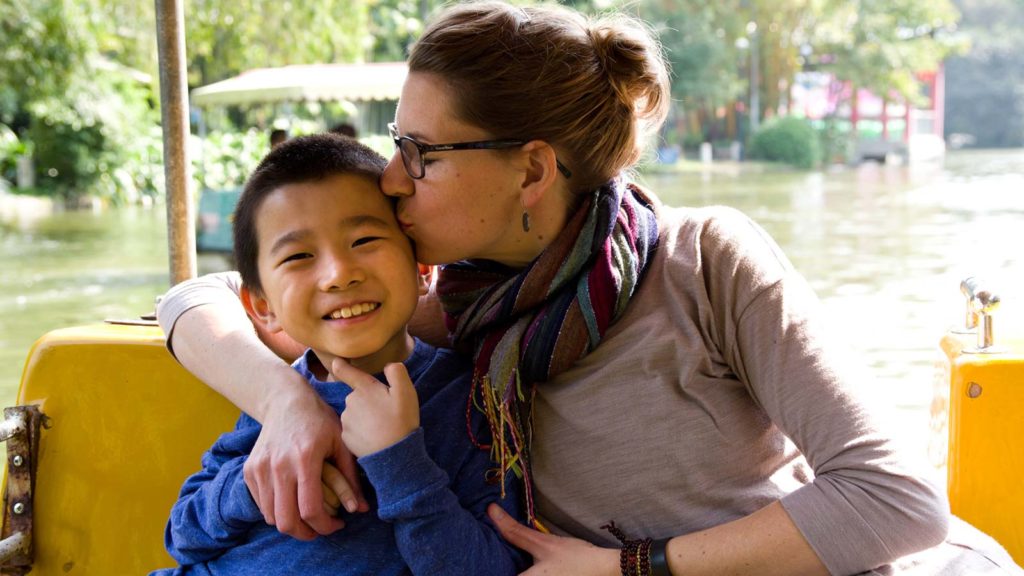
Visit the Waiting Child Photolisting
Meet some of the children waiting for loving adoptive families. Could you be the right family for one of these children?
A More Immersive Experience in Your Child’s Culture
When you adopt internationally, you not only embrace a child into your lives — it’s also important to embrace your child’s birth culture. And while your child gains your culture as a U.S. citizen, their birth culture will always be a part of their identity.
One of the best ways to learn about your child’s birth culture is of course to experience it first-hand. Traveling in your child’s birth country provides a kind of immersive cultural experience that’s impossible to experience otherwise. For families that have the flexibility to stay longer in country, this experience becomes even more immersive — giving them an even deeper understanding of where their child comes from. They can explore the landscape, see important sites and historical markers, learn to cook traditional meals, participate in traditional events, and visit marketplaces and communities.
Language is also a significant aspect of any cultural immersion.
“So many of the experiences are going to be new for the child and if you can experience them together in a place that feels familiar to the child, you can begin building trust that will help the transition into unfamiliar territory through travel back to the U.S. a little easier.”
Angie Wharfield, South Africa Adoption Director
“The challenge with South Africa is that they have so many different languages,” Amanda says. “For families in the standard adoption process, they won’t learn what language their child speaks until they receive a referral.” But during their stay in country, families will have the advantage of learning the language in the context in which it is spoken.
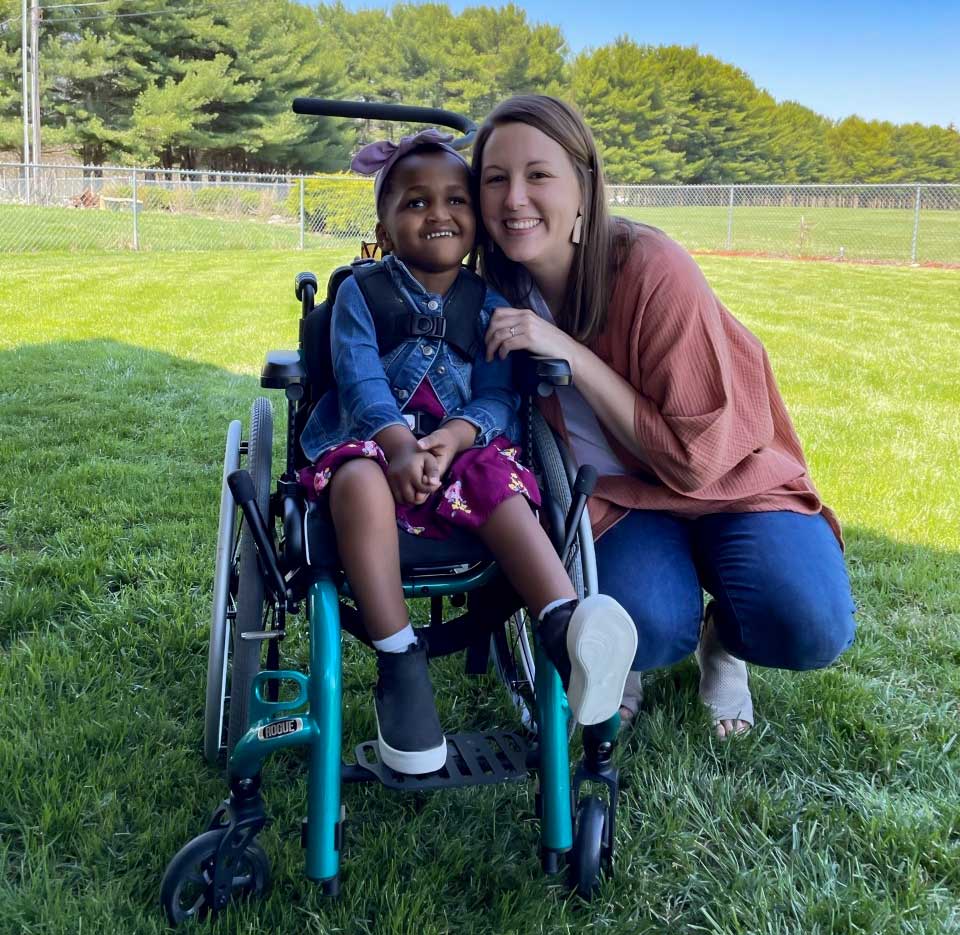
“Instead of just trying to read it over the internet or practice it on a piece of paper,” Amanda says, “that immersion experience will help families learn how to speak, the inflection, whether they are hand talkers — all the aspects of language that is very challenging to grasp on shorter trips.”
While learning your child’s language will make it easier to communicate while your child is learning English, the experience will also build your empathy and understanding for your child once they’re in the U.S. It’s hard to learn a foreign language, and it can feel very alienating when you are surrounded by people who speak a language you don’t understand. Add to that unfamiliar food, unfamiliar smells, unfamiliar climate and surroundings — it’s quite a shock for anyone. Especially a child.
“Parents can really gain perspective by taking part in the sights, sounds and sensory aspects of living abroad for a more extended amount of time than is typical for a lot of countries,” Amanda says of the South Africa program. “We hope that adds to their understanding of what their child is going through — even to a small degree.”
For many children adopted from South Africa, part of the shock of the transition will be going from a country in which they belong to the majority race — to a country, and oftentimes a family, in which they are a racial minority.
“You can’t remove the conversation of race and ethnicity out of the context of South Africa,” Amanda says. As most South Africa adoptions — and most international adoptions in general — are transracial, adoptive families and adoptees face a whole other layer of complexity. If families can experience for a time what it’s like to not belong to the majority race/ethnicity, that too will deepen their understanding of what their child is going through as they adjust to their life in the U.S.
Grief, Travel and the Journey Home
In any international adoption, a big scary part of the journey for children often comes right away — traveling to the U.S. with their adoptive family. While some children may be excited to get to ride on an airplane, in many cases, the newness of the experience can be overwhelming. Add to that the feelings of grief and loss children go through as they say goodbye to everything they know, and it becomes quite clear that it’s not a good idea to schedule the flight home too quickly. This, too, is one advantage of a longer stay with your child in country.
“Having that time in country lets you learn how your child expresses grief, how you can comfort them, in a way that’s not putting them immediately into fear and retraumatizing them in the experience of travel,” Angie explains. “Most children have likely never been on an airplane. So many of the experiences are going to be new for the child and if you can experience them together in a place that feels familiar to the child, you can begin building trust that will help the transition into unfamiliar territory through travel back to the U.S. a little easier.”
Both Holt and our in-country South Africa partner, Wandisa, recognize that a 10-12 week stay is not ideal for most families. The requirement is solely due to the legal amount of time it takes to process international adoption from South Africa. But for families who can manage the long stay in country — and also take leave with their child once home in the U.S. — there are many upsides.
“It’s super beneficial,” Amanda concludes, “for the child to see their parents living in their culture and building acceptance of who their child is at their core before bringing them here where everything is different. … At an identity level, it’s really important.”

Adopt From South Africa
Many children in South Africa are waiting for a loving, permanent family.

